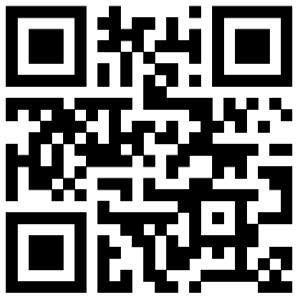


The good life starts with good health.
- GISELLA VASQUEZ, FIONA REYES, AND ABIGAIL ABOITIZ




TOPDOC CLINICS MIAMI AT THE FOUR SEASONS OFFERING BODY CONTOURING, FACIAL REJUVENATION, & LASER THERAPY






The good life starts with good health.
- GISELLA VASQUEZ, FIONA REYES, AND ABIGAIL ABOITIZ






EDITOR IN CHIEF:
JUNIOR EDITOR:
CHIEF MARKETING OFFICER:

MARKETING DIRECTOR:
SOCIAL MEDIA SPECIALIST:
GRAPHIC DESIGNER:
Brianna Connors
Riley George
Hannah Townes
Derek Archer
Lauren Rider
Sarah Cook
 Riley George Gaye N. Luke A.
Mălina O. R. Peter C. Yuko T.
Riley George Gaye N. Luke A.
Mălina O. R. Peter C. Yuko T.

Living a healthy and balanced life is a daily challenge many of us face. With the constant flow of medical advancements and health trends in lifestyle mixed with the busy rhythm of our lives, we often are prevented from learning these new techniques to improve our lives for the betterment of our health.
Here at Top Doctor Magazine, we are on a mission to bring these advancements to your attention and become a source of inspiration for those who want to live their healthiest and best lives. We seek to bridge the gap between medical professionals and consumers who are seeking to improve their overall health and wellbeing. Our contributors guarantee to constantly keep you up to date in the latest health trends and medical advancements with fresh, entertaining, and reliable content, varying from anything like nutrition and travel to lifestyle choices and the latest medical technologies!
We hope that our exclusive articles, recipes, and pieces will guide you towards self-realization, self-improvement, and willingness to help those around you better themselves in every health aspect. Because we at Top Doctor Magazine know that when you look your best, feel your best, and understand your health best, you can be the greatest version of yourself possible.











The most significant organ of the human body is the skin, and we have to keep it healthy and clean as it represents a massive part of us. However, as with any other body part, the skin can encounter medical issues, such as eczema.
Eczema, also called atopic dermatitis, is a condition that causes your skin to blister and become itchy, dry and full of rashes. The symptoms depend on the type of eczema you are experiencing. This skin infection is widespread in children (i.e., infantile eczema and childhood eczema), especially those going through puberty. But this does not mean adults are safe from eczema.
An important detail of eczema is that it is chronic, meaning it can last for lengthy periods. In addition, eczema can have different stages of magnitude, named by the people with this skin condition as ‘flare-ups.’ Usually, flare-ups erupt in unexpected
moments, but specific triggers can speed it up.
Eczema is very well known for the variety of types it presents. Each eczema type comes with a set of symptoms to help you identify it.
Atopic dermatitis is the most common type of eczema. It is mainly seen in children and can be mild or severe. Parents can hand down atopic dermatitis to children through DNA. Children with atopic dermatitis are more likely to develop food sensitivity, hay fever or asthma.
Symptoms of atopic dermatitis include itchy and inflamed skin and redness. This type of eczema usually appears on the knees, neck, creases of the elbows, wrists and facial skin.
Cold weather, low humidity, detergents, soaps, perfume, animal hair or saliva, scabies, dust, wool, synthetics, food allergies and hormonal changes can trigger severe atopic dermatitis flare-ups.

Contact dermatitis appears when your skin comes in contact with certain substances. As a result, the skin patch becomes red, dry and itchy. It can also blister very quickly and turn into a hive, a type of rash resembling small red bumps. This type of eczema increases its chance of appearing if you already suffer from atopic dermatitis. Contact dermatitis can either be irritant or allergic. Irritant contact dermatitis appears when your skin comes in contact with substances that irritate the skin, such as:
Solvents; Cement; Weed killers; Acids and alkalis; Hair dyes; Different types of shampoo; Fabric softeners and harsh detergents.
Allergic contact dermatitis develops when a person’s immune system considers particular substances as allergens. Usually, once the body deems a substance an allergen, you will be allergic to it. Examples of possible allergens are:
Latex; Fabrics and clothing dyes; Glue and adhesive; Plants like sumac, poison oak and poison ivy;
Medications such as oral antibiotics and topical; Makeup and different cosmetics; Nail polish.
Neurodermatitis is a more severe eczema type. It manifests itself by developing itchy patches on your skin
that become itchier and itchier with each scratch. Repeatedly scratching the skin patch causes it to become thick and leathery. The scratching cycle can disrupt your sleep schedule, sexual drive and general quality of life. Neurodermatitis usually develops on the wrists, legs, neck, forearms and anal region.
Dyshidrotic Eczema
Dyshidrotic eczema, also known as pompholyx eczema, is a skin condition that usually appears in people under 40 years old. It manifests itself by spreading small blisters all over the hands and feet, becoming incredibly itchy, filling with liquid and turning infectious. In addition, the blisters can become very painful as they swell up and ooze pus.
It has not been discovered what causes dyshidrotic eczema to develop, but it is more common in people experiencing hay fever, fungal skin infections and atopic dermatitis. In addition, it can sometimes be triggered by emotional stress and drastic weather changes.
Nummular Eczema
Nummular eczema, also known as discoid eczema, is easily recognized because of the circular-shaped patches of itchy, red and swollen skin that it causes. This type of eczema usually affects the lower legs, forearms and torso. Nummular eczema can be triggered by:
Cold weather;
Bacterial skin infections; Insect bites;
Dry skin; Injuries such as burns, friction and slashes;

Certain medication; Atopic dermatitis.
Seborrheic dermatitis is the only type of eczema that mainly affects your scalp. It manifests itself through scaly patches, red skin and dandruff spreading on your scalp and face. It can also affect oily parts of the body such as the sides of the nose, eyebrows, eyelids, ears and chest. The main seborrheic dermatitis triggers are:
Certain medications; Weak immune system; Illnesses such as (e.g., HIV, AIDS and cancer) and alcoholic pancreatitis; Going through an arduous recovery, especially from a heart attack.
Stasis dermatitis is the type of eczema that usually spreads around the lower legs. The main cause of stasis dermatitis is a condition called chronic edema. Chronic edema is the swelling caused by excess fluid in the body tissue. Stasis dermatitis turns the skin around your lower leg red and very itchy. It can also lead to more dangerous symptoms
such as hyperpigmentation, pus and lichenification.
Eczema varies in the types and symptoms you can experience. Usually, each type of eczema has different symptoms to help you identify it. But, even with all of these types, there are a few symptoms of eczema experienced through each of them, such as:
Itching; Dry skin; Sensitive skin; Swelling; Oozing; Crusting of the skin; Inflammation; Discoloration of the skin patch; Lathery or scaly skin patches.

The affected skin areas vary because so many types of eczema are different in how they manifest and the areas they affect. Most types of eczema affect the face, neck, wrists and hands, but they can also spread on your legs, feet, scalp and anal region.

Three things can be said about eczema flare-ups: they are occasional, chaotic and triggered by different factors. If you think you have figured out what causes your eczema flare-ups, you can diminish them by keeping your distance from triggers.
Psoriasis is a skin disease that manifests itself similarly to eczema. However, there are ways to tell them apart. Eczema causes such intense itchiness that you can start bleeding if you can’t avoid scratching. The skin patch turns red, inflamed, crusty and can scale and ooze.
On the other hand, psoriasis also causes itchy skin, but the skin also stings and burns. Psoriasis also causes red patches of skin, but the patches are much thicker and more inflamed than eczema.
Hives, also known as urticaria, are an allergic reaction to factors your body considers allergens. A significant difference between eczema and hives is that eczema turns the patch of skin very dry and leathery, while hives only cause large bumps to appear without any fluid.
Rosacea is a skin condition that also causes redness, itching and bumps to appear on the skin. It’s challenging to tell eczema and rosacea apart, but you will find differences if you pay close attention to the details. For example, eczema does not cause flushing of the skin or make your blood vessels more visible, such as rosacea.
Both skin conditions cause the skin to become inflamed, itchy and somewhat painful. Shingles are considered to be herpes caused by a virus named varicella-zoster virus. Specific differences between the two conditions are:

Rashes caused by shingles appear on only one side of the body, while the rash caused by eczema spreads on both sides.
Shingles cause burning and tingling before the rash appears;
Shingles cause fatigue;
Shingles usually disappear after a few weeks, while eczema is chronic.
Experiencing eczema during pregnancy will not put a pregnant woman or her fetus in danger. But, because it’s a chronic condition, eczema can continue even after pregnancy. So, if you would like to follow up on treatment for eczema during pregnancy, talk to your doctor first, as they can prescribe you a treatment that won’t put you or the child in danger.
Only seborrheic dermatitis can cause hair loss if left untreated. This happens because the hair finds it difficult to grow through an unhealthy and inflamed scalp. Also, people with seborrheic dermatitis tend to scratch their scalp, leading to hair loss.
Because eczema is persistent, you may need to try various treatments over a long period until you find something that genuinely controls the skin condition. But this does not mean that it will genuinely disappear and that the flare-
ups will stop. The most common treatment modalities are:
Topical treatments such as creams and mild soaps to stop the itching and repair the skin; Prescription medications that fight the infection and control the inflammation; Therapies such as wet dressings, counseling and light therapy;
Behavior modification to stop scratching yourself.
Since people with eczema have different triggers and allergens, it’s hard to put your finger on eczema-related foods. You first have to determine which foods are causing the skin reaction and flare-ups. When you find that the eczema symptoms worsen after eating a particular type of food, it’s time to remove it from your diet. The most common foods that trigger eczema and eczema flare-up are: Dairy; Eggs; Soy; Gluten; Wealth; Citrus fruits; Nuts; Spices; Tomatoes; Pears.
Unfortunately, there is no absolute cure for this skin condition because eczema is chronic. Some treatments can diminish the eczema symptoms and even stop them for weeks, but there is no cure.

If you think you may suffer from eczema, it’s essential to consult a doctor or dermatologist since this condition can become dangerous if left untreated. However, you can live a happy and healthy life with proper treatment modalities, even if your eczema will never truly vanish.
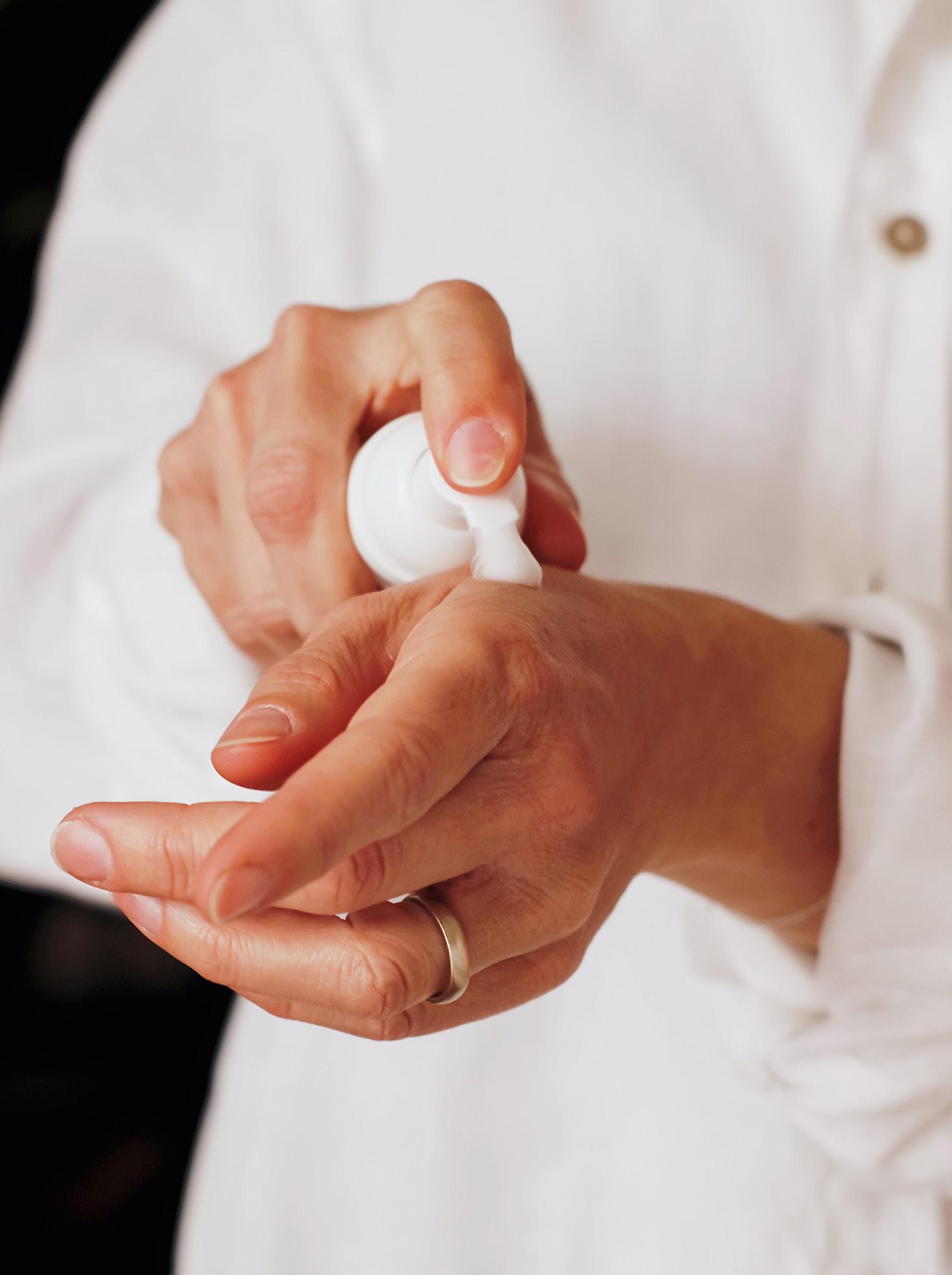
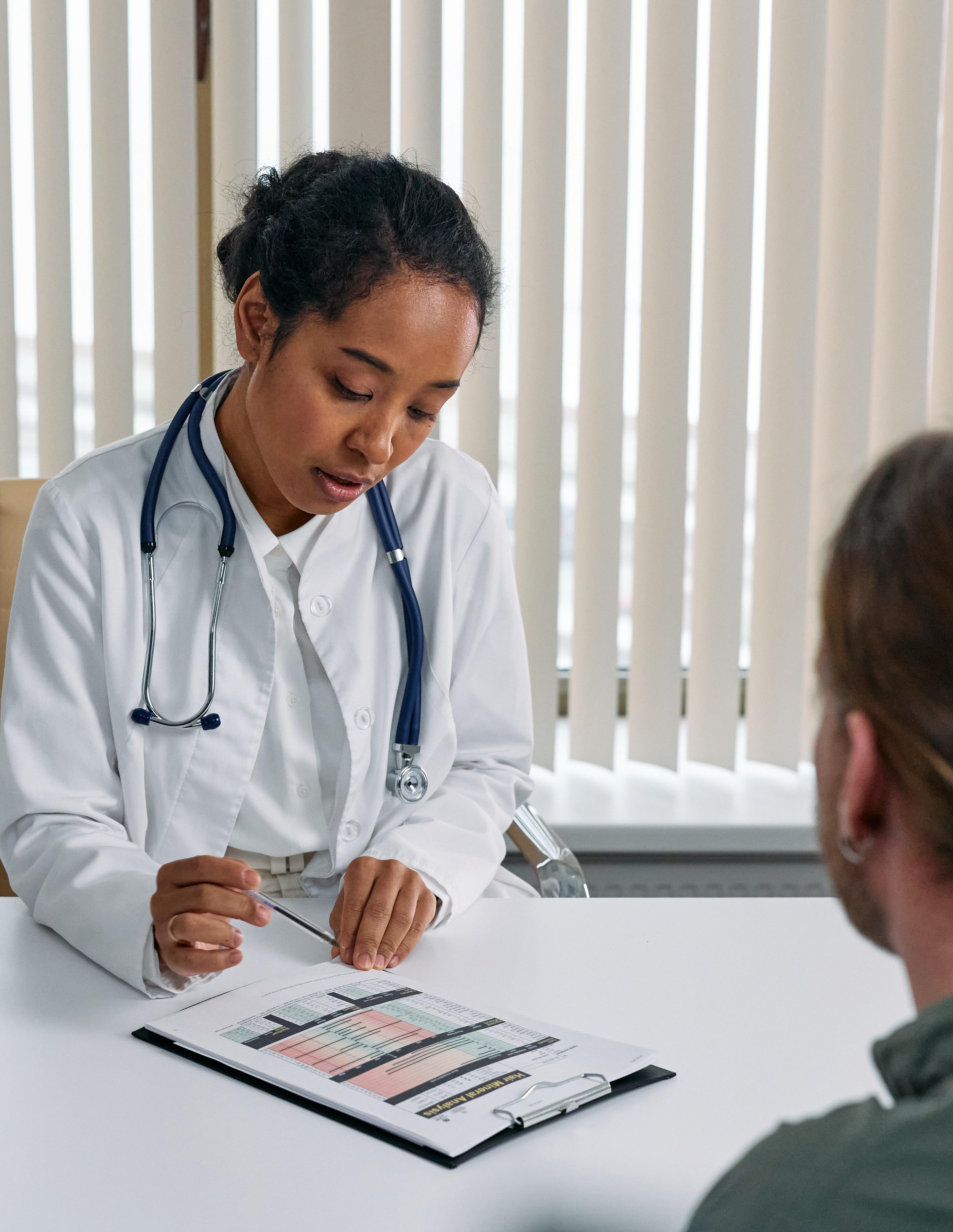


TopDocDX presents a real-life picture to the patient, with all its positive and negative influences. Therefore, physicians will have an enhanced understanding of the patient’s overall health. This clinically powerful and non-invasive testing system for hidden diseases in asymptomatic patients provides the patient with an inside-out look on their health.
15-MINUTE NON-INVASIVE ON-SITE DIAGNOSTIC TESTS

 WORDS BY MĂLINA O. R.
WORDS BY MĂLINA O. R.
Tea is known for being one of the healthiest and tastiest beverages (unless you’re on team coffee, of course). Almost any type of tea has a positive effect on your body, but certain plants can prove vital when talking about the health of your immune system.

Tea contains polyphenols, a group of antioxidants linked to the health benefits that tea brings to the table. This beverage also contains flavonols and other chemicals proven to lower blood pressure and cholesterol. In addition, the antioxidants found in tea help protect your body against harmful effects caused by smoking, pollution and UV rays.
Green tea has overall positive benefits for your body. This healthy source of catechins and antioxidants is especially effective against free radicals.
Antioxidants are produced by the human body but not in sufficient quantities. If your body cannot fight these free rad-
icals, your body will be more prone to developing cancer, heart diseases, Parkinson’s disease and respiratory diseases. Therefore, your immune system will thank you for the additional antioxidants from green tea.
Furthermore, long-term consumption of green tea reduces the risk of diseases such as:
• Liver diseases;
• Viral diseases;
• Coronary diseases;
• Bacterial infections;
• Obesity;
• Type II diabetes.
Although many people do not enjoy the taste of black tea, they might consider giving it a second chance after finding out how it helps the immune system. Besides helping the body fight free radicals, black tea contains tannins (i.e., antioxidants) that cause the beverage’s abnormal taste. Tannins are an excellent weapon against conditions such as influenza, hepatitis and dysentery. The antioxidants in black tea are perfect
Drinking delicious beverages like these tea options will improve your health and help your body fight any incoming illnesses.
against strokes, cholesterol build-up, high blood pressure and high sugar levels. They also encourage the production of healthy gut bacteria. If you want to enjoy these amazing health benefits and kick the coffee habit, black tea is the place to start!
3: Ginger Tea
This spicy tea has anti-inflammatory and antibacterial properties and is excellent for escaping nausea. Ginger, in general, has many health benefits, and by turning it into a cup of tea, it becomes more pleasurable. Antioxidants are also present in ginger tea which improve blood circulation and help with congestion.
Ginger tea is ideal for a healthier immune system and faster recovery during flu season, as it is known to fight pain, fevers, coughing and infections.
4: White Tea
White tea is an immune system boosting beverage with a light and delicate taste. Known to have similar properties to green tea but not as powerful, the an-
tioxidants in white tea are proven to be effective against fungal, bacterial and viral infections. In addition, white tea protects the immune cells responsible for locating cancerous by-products.
5: Turmeric Tea
The last but not least beverage on our list is turmeric tea. This amazing beverage promotes the function of T and B cells, which are essential parts of the immune system. Moreover, turmeric tea fights inflammation, arthritis, asthma, allergies, diabetes, cancer and heart diseases.
Keeping your immune system healthy and enjoying yourself always go together. Drinking delicious beverages like these tea options will improve your health and help your body fight any incoming illnesses. You can enjoy a cup of hot tea while working, reading or watching your favorite series. You can always squeeze a cup of tea into your day to boost your immune system!

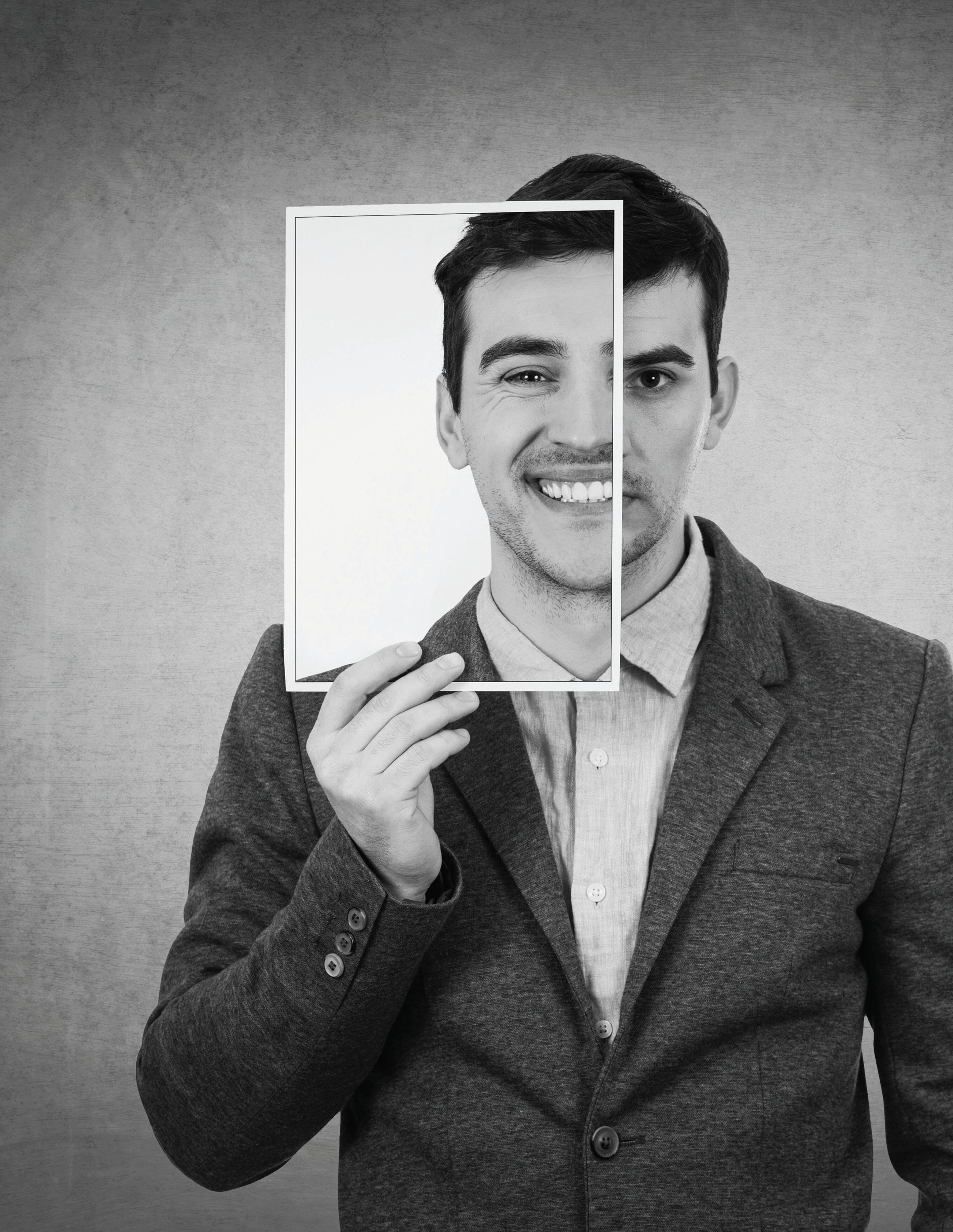
Too much of anything is bad, even when it’s something good. As much as we want to always stay positive and spread good vibes to everyone we meet, there are just some moments in life when looking at the bright side will not fix a situation.
So, where should we draw a line between genuine optimism and toxic positivity? Perhaps it’s time to delve inwards to see if your overly sunny disposition may just be a defense mechanism to avoid facing the truth of a not-so-perfect reality.

According to The Psychology Group, toxic positivity amounts to excessively overgeneralizing a happy or positive state on any given occasion that leads to denying, minimizing and invalidating an authentic human emotional experience.
Part of what makes life worth living is the broad spectrum of emotions we get to feel and experience. Joy, love, sadness, pain, anger, loss, excitement, fear, disappointment—the list goes on. That’s why you often hear people say that life is like a rollercoaster ride: sometimes you go up, sometimes you go down. In those down moments, it’s important to lean in and accept them for what they are instead of trying to escape them.
Toxic positivity masks the true and unpleasant reality with a false perception that the world is full of rainbows and butterflies. Such a perception is harmful to your mind and body because you’re creating a narrative that everything is great when the reality is, you’re scared to face the negative emotions tied to a situation.
Toxic positivity is real, and you can spot the signs when you or someone you know might be guilty of toxic positivity.
• Hiding or disguising your true feelings;
• Minimizing other people’s experiences and emotions by using ‘feel good’ statements;
• Feeling guilty for feeling negative emotions like sadness, anger or disappointment;
• Brushing off your problems with an ‘it is what it is’ attitude
• Shaming or chastising others for expressing negative emotions or anything other than positivity;
• Invalidating someone’s emotional experience by saying things like ‘it could be worse’;
• Dismissing emotions or trying to sweep them under the rug.
If you found yourself nodding and gasping, that’s me! to four or more of these signs, then maybe it’s time to take a step back and reflect on why you may be acting this way. Not showing your genuine emotions or invalidating others’ feelings can create a wall that will prevent you from connecting with yourself and others. People might even think of you as someone who lacks empathy and will naturally steer away from you.
How are you supposed to stop toxic positivity from controlling your life? Experts say that allowing yourself and others to feel a certain amount of compassion and catharsis is the best way to spread genuine positivity. So, when you’re looking for a silver lining, acknowledge
that the rain clouds are also there, which is what optimism essentially is!
What sets apart toxic positivity from optimism is that optimism is rooted in the sense of reality, where the person knows and accepts the dire situation in front of them but still believes the tough times won’t last forever. As a result, optimistic people proactively search for a way to try and upheave the situation they’re in.
On the other hand, toxic positivity disengages from reality and pretends everything is fine when it isn’t. And while it may seem like a good idea to ‘fake it til’ you make it’ by being positive all the time, this coping mechanism becomes limiting because you are not allowing yourself to face the negative feelings and harsh truth in front of you.
The way to overcome your toxic positivity is by allowing yourself to feel all the negative emotions. Jasmine Marie, a breathwork coach and founder of Black Girls Breathing, even suggests that you don’t have to look at them as ‘negative’ emotions at all: sadness, anger and grief aren’t inherently negative. These feelings are just responses to what’s happening to us.
Instead, Jasmine encourages us to use these feelings as indicators to become more aware of ourselves. Ask yourself, what do I need to pay attention to? and what do I need to give myself compassion on? whenever these ‘negative’ feelings arise.
The sooner you learn to sit with these uncomfortable emotions and understand them for what they are, the sooner you can move forward with feeling genuine happiness and positivity.
We often choose the easy route and escape, not realizing that our problems will just come back for us unless we decide to face them head-on. Sitting with our emotions and thoughts will help us become more comfortable in discomfort, making us stronger and ready to slay the next dragon that comes for us.
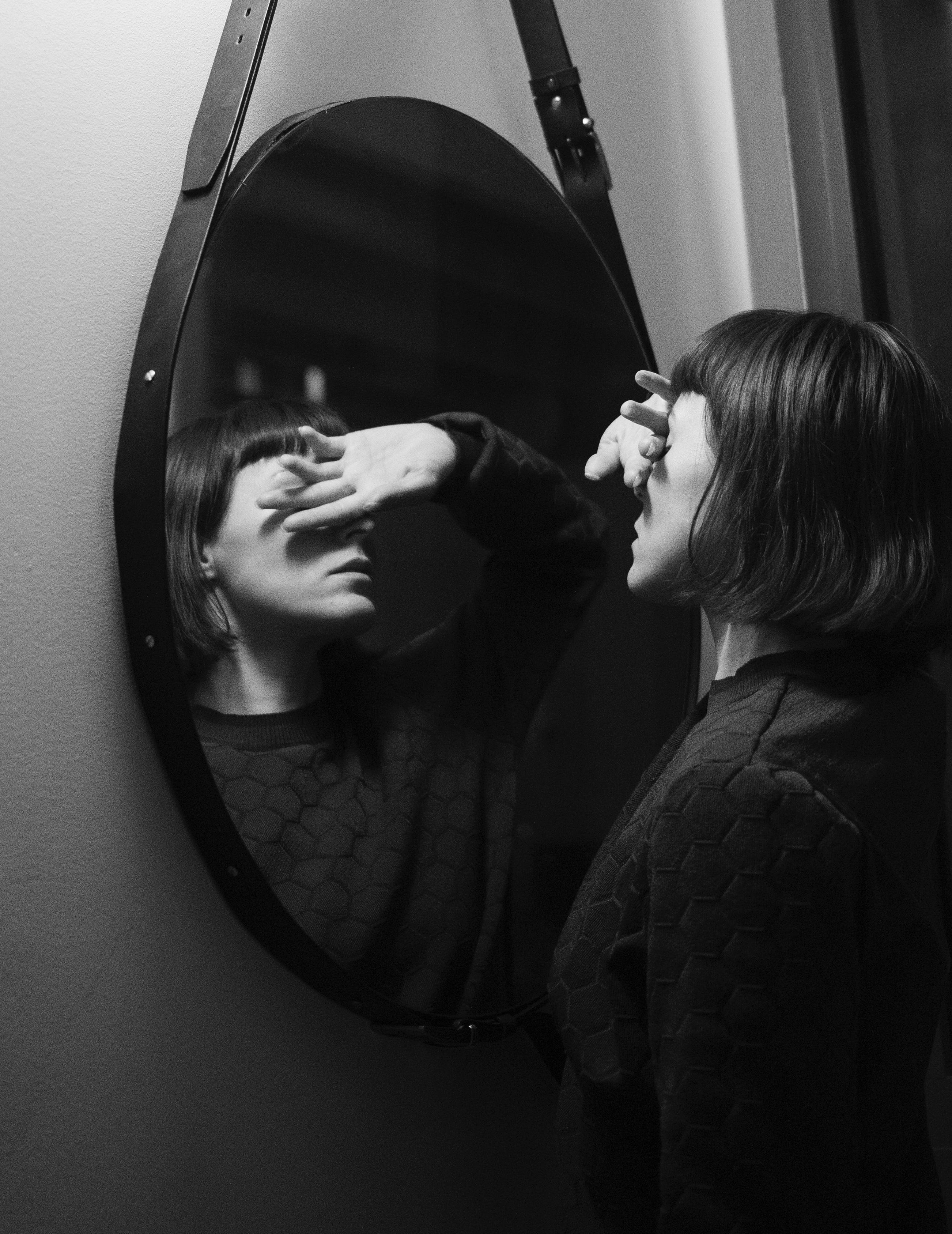
The future is now, thanks to science! As our technology advances and our digital world continues to develop, the line between the real world and the digital becomes increasingly blurred.
One example of this blurring is augmented reality (AR). Through augmented reality, we can put parts of our digital world on top of our physical one. Typically, we think about augmented reality’s implications for entertainment, shopping experiences and social media. But beyond those industries, AR could completely reimagine how we experience and receive medical care.

Augmented reality is best understood as an interactive experience of a real-world environment. That means that through AR, you’re able to interact with your real-world environment through digital technology. Often, this means using a combination of cameras and displays to project a digital image over something in the real world to allow us to interact and change it in real-time.
A good example of AR technology is Google’s old Google Glass project. Google Glass worked by projecting digital images through a pair of glasses so that you could see the digital images in the real world. It allowed users not only to see the real world but also to see it digitally enhanced.

Even more than just the example of Google Glass, currently, with even more developed AR technology, we cannot only place digital things into a physical world, but we can also make those digital images interactive and reactive. You can use AR all across your daily life. You may have come across some of these common applications of AR already, but even if you haven’t, AR will likely continue to be a bigger and bigger part of daily life.
AR technology can help you remodel or decorate your home. Through AR, you can see what that couch, paint color, finish, etc., would look like in your house before you buy it and have to go through the trouble of installing it.
With AR, you can simply pull up a digital image of your new sofa and see it in your current living room. This lets you make more informed decisions as a consumer because instead of taking a risk on a new couch, paint color or home, you know how that new product will look in your home or what your new home will look like.
AR is also being used daily to make labels on wine bottles more interactive, which might be the future of product decoration. For example, the company Living Wine Labels uses augmented reality to turn their labels into an interactive storytelling experience and incorporate fun experiences that add value to their wine for their customers.
Perhaps the most exciting usage of AR in our daily lives is the ability to translate street signs and other text into different languages using our phones’ cameras. One of the companies that spearheaded this technology is Word Lens, a smartphone app that allows users to use their cameras to translate street signs and text in real-time. Apps like Word Lens work almost magically by replacing the original text with translated text in the same font and size as the original, giving you a digital window into a world where all the signs and words are translated into your language of choice.
So how exactly does all of this seemingly magical technology
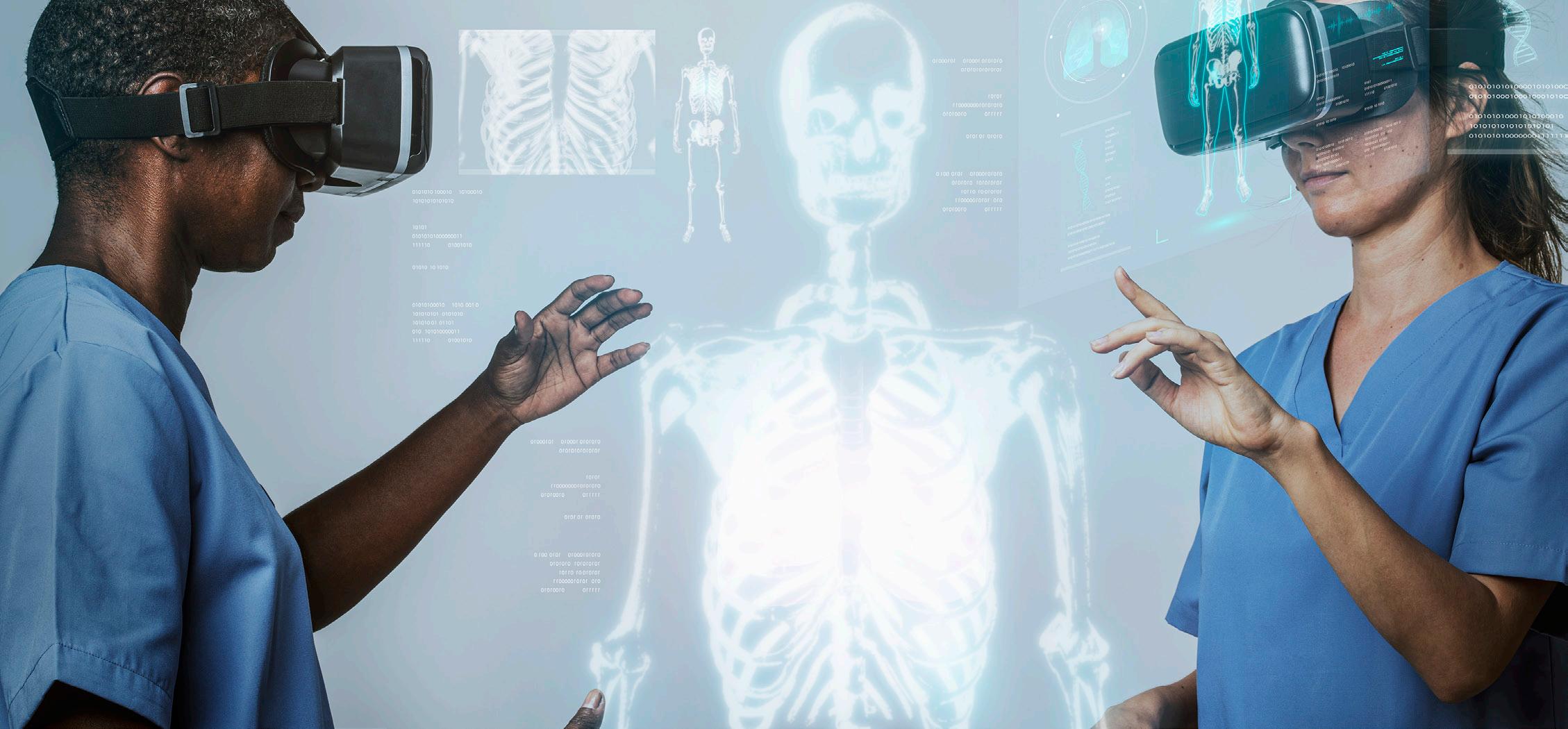
work? Through a concept called Volumetric Video.
Volumetric Video works by capturing a three-dimensional object or space, allowing that same object or space to be digitally viewed as three-dimensional. It gets its name from its ability to capture volume or the three-dimensional space an object occupies. By reproducing that volume, you can make an object digitally interactive as it would be in the real world.
Augmented reality relies on this technology to capture an object and space in 3D and overlay additional information to that image. For example, AR can use volumetric video to accurately scan a room and then put a digital image of a physical object that can be digitally interacted with as though it was actually in the room.
AR can reinvent how patients experience medical care by helping them visualize results, make medical advice more memorable and explain how a treatment or illness will affect them.
In prosthetics, AR can be used to give patients an idea of what their prosthetic might look like and how they would be able to move and interact with it. The doctor could use AR to help explain how the prosthetic would work in a way that the patient would better understand because they would be digitally interacting with it as the doctor explains it.
AR can also be used for aesthetic medical procedures like plastic surgery, implants or fillers. The hardest thing about these procedures for the patient is the unknown of whether they’ll like the aesthetic changes from the surgery.
With AR, the patient will see the proposed aesthetic change before the surgery and be able to move around with it, interact with it and work with the doctor to tailor it to their preferences. This will lead to greater patient satisfaction and easier communication for doctors.

AR has a similar application when it comes to selecting a new hairstyle or pair of glasses. Much like how you can visualize the result of a surgery or interact with proposed cosmetic changes, you can also use AR to see how a hairstyle would look on you. Then, you can move it around, change the color, and interact with it until you’re satisfied with the end result.
The same is true for choosing a pair or style of glasses. You won’t need to have a physical pair of glasses with you anymore. Instead, you can use AR technology to try on and interact with new glasses from anywhere!
Augmented reality is slowly changing many levels of our society, particularly how consumers and patients experience their products or care. In medicine, AR makes it easier to visualize and understand outcomes, removing the anxiety of undergoing prosthetic or aesthetic procedures through clearer communication.
Making it easier and simpler for doctors to explain complex medical procedures and outcomes to patients and for patients to understand and give feedback on proposed outcomes. Through these innovations, AR will make medical care clearer, simpler and less stressful for all, improving the patient experience and making care provisions easier.

Three visionary women are bringing a fresh perspective to The Good Life Festival, the renowned Baby Boomer music event, in the picturesque landscape of Schnepf Farms in Queen Creek, Arizona. The incredible music lineup features Kenny Loggins’ first stop of his Farewell Tour, Kansas, Blue Oyster Cult, and Journey’s lead singer Steve Augeri. The festival will also showcase 50 wineries, 20 craft brewers, 10 distillers, gourmet food, artisan retailers and new innovations, technologies, alternative solutions in health and wellness as well as an education platform covering financial concepts, nutrition, biohacking, precision medicine, dynamic brand activations, brain health, and more.
Gisella Marie Vasquez, Fiona Basa-Reyes, and Abigail Aboitiz have partnered with R Entertainment to introduce a new focus to the already successful event by introducing the Complete Circle of Care health and wellness pavilion. The three women founded Complete Circle of Care, a comprehensive personalized health, wellness and lifestyle platform and ecosystem that brings integrated end-to-end solutions for a complete lifestyle modification solution.
The Complete Circle of Care is a comprehensive approach to healthcare that emphasizes the importance of prevention, wellness, and education,
as well as a supportive ecosystem of providers and services. Overall, our foundation is built around the idea that healthcare is more than just treating illnesses and injuries, it is about helping individuals achieve optimal health and wellness across all aspects of their lives. By offering a comprehensive range of services and support, we can create a healthcare experience that is personalized, holistic, and empowering - Aboitiz explains.
“In the healthcare industry, we have seen information silos & a lack of transparency. It’s really time to come together and collaborate. It’s important to use technology in the right way to help transform the healthcare system by making it more patient-centered, efficient, and effective,” the three women agreed.
Gisella Marie Vasquez has been in the medical field for almost 10 years working as a Registered Nurse Supervisor, RN Medical Coder as well as an Oncology Nurse in the Intensive Care Unit at City of Hope. About 8 years ago, Vasquez got into a traumatic car accident that left her with a misaligned spine, c5 & c6 injury and seizures from the impact. Unable to work bedside, she transitioned into the business and finance industry helping individuals,families and business owners learn about money and how to build a better financial future.
“The healthcare and financial industry is undergoing a revolution, and now is the time to get involved on a grand scale. The key to success is through community building, education and awareness and that’s exactly what we are doing through The Good Life Festival which has about 10,000 attendees already this year. By reaching out directly to a generation & audience that want & need our help & information the most, we have the opportunity to make a real difference in their lives,” Vasquez says.
Gisella knows firsthand the impact that an unforeseen circumstance can have on one’s mental, physical and financial life. Her passion came from a place where she herself went through depression after her car accident. Knowing another pill was not going to “fix” her, she found other alternative therapies to help. Everyone has their own struggles and challenges and we want others to know they are not alone, there is hope. That’s why she’s determined to join forces with like-minded individuals to provide education and personalized care that addresses each person’s unique needs and goals.
Fiona Basa-Reyes has been a pioneering force in the healthcare industry for nearly two decades, employing countless doctors and helping patients navigate the complexities of modern healthcare as a CEO for multiple hospitals. But despite her many accomplishments, Reyes felt that something was missing - a focus on preventative wellness that could truly transform people’s lives.
“It’s no secret that the healthcare industry can be slow to adapt,” Reyes explains. “But in the wake of COVID, we’ve had to find new ways to implement technology and respond to patients’ needs quickly. That’s why I’ve pivoted from operations to partnering with health tech companies to explore new avenues for preventative wellness.”
Reyes shares a common vision with like-minded women like Vasquez and Aboitiz, who believe that good health is the foundation of a good life. Together, they are working
We’re doing this to make a real impact on the world and leave a legacy that will last for generations to come.
- Fiona Reyes

to create a platform that covers all eight dimensions of wellnessphysical, social, spiritual, occupational, intellectual, environmental, financial and emotional - to help people live their best lives.
For Reyes, this work is not just a job, but a calling.
“Wellness is not a new concept - it dates back thousands of years,” she says. “It’s about getting back to our roots and rediscovering what it means to live a harmonious life. I’m excited to be a part of the Good Life Festival and to continue this journey toward better health and happiness for all. It’s kind of an awakening for everybody to get back to that root of what wellness really means. It’s such a beautiful journey. It’s just the first of many Good Life Festivals that we’re going to do.”
As for Abigail Aboitiz - a seasoned entrepreneur with multiple businesses across the healthcare, tech and fitness industry and having over 15 years of experience is determined to address healthcare issues at their root cause.
“You hear and see it on the news all the time, everyone is talking about how many people are dying, but nobody is talking about how we should be living. What better ways to prevent illness? Nobody is really teaching and showing people solutions and how we can utilize technology and data to improve our lives for the better and really take control of our health rather than our health being in control of us,” Aboitiz passionately says.
There needs to be educating, empowering and showing others what is possible and helping people adapt by creating enjoyable, interactive solutions that make a real difference in people’s lives.
“Showing people the solution is crucial, and it has to be done in a fun, interactive environment that truly educates them and encourages positive change,” Abigail explains. “I believe that what happens to your health score will affect your financial score because at the end of the day our health is our wealth and our bodies have an incredible capacity to heal themselves if we take care of it.”
Alongside her business partners, Aboitiz is focused on creating an amazing experience for everyone at the upcoming Good Life Festival this March 24-26,2023. By promoting awareness and proper education, they hope to bring communities together and work collaboratively towards better health and preventative measures.
“We’re doing this to make a real impact on the world and leave a legacy that will last for generations to come.”says Reyes.
With The Good Life Festival just around the corner, the trio is excited to launch and show you what it truly means to live a good life! We invite you to join us and learn more. Together we can make a difference! See you at The Good Life Festival.
Our bodies have an incredible capacity to heal themselves if we take care of it.
- Abigail Aboitiz


Intermittent fasting has become a popular way to lose weight, feel better and improve overall health. It involves periods of fasting followed by periods of eating. There are many different types of intermittent fasting, each with its own set of rules and benefits.
Intermittent fasting comes with its own vast array of benefits, such as reducing your risk of chronic diseases such as heart disease and diabetes. Fasting also helps to boost your metabolism and burn fat more effectively.
When you fast, your body is forced to rely on stored energy, which means it will start to break down fat cells for fuel. This process can help you lose weight quickly and effectively. Intermittent fasting is a great way to kickstart your weight loss journey!
Intermittent fasting is a dietary pattern that cycles between periods of fasting and non-fasting.
The idea behind intermittent fasting is that we should not eat for a certain period of time, usually 12-24 hours, in order to give our bodies a break from digesting food. Depending on what works best for you, you can resort to fasting daily or weekly.
Intermittent fasting has been shown to improve blood sugar control and reduce insulin resistance, leading to weight loss. It can also help lower cholesterol levels and reduce the risk of heart disease.
The most common fasting protocols are 16/8, 18/6, and 20/4—all referring to fasting for a certain number of hours per day and then eating within an 8-hour window. For example, with the 16/8 protocol, you would fast for 16 hours each day and eat only during an 8-hour window.
Other less common fasting protocols include the 5:2 diet, which involves fasting for two days each week and eating normally the other five days.
The 16/8 method involves fasting for 16 hours and eating only during an 8-hour window. Also called the Leangains protocol, this fasting method was popularized by fitness expert Martin Berkhan. It is the most popular type of intermittent fasting as it is the easiest to stick to.
For example, let’s say you finish your last meal at 8 p.m. and don’t eat again until noon the next day—you are fasting for 16 hours every day. You can drink water,
black coffee, tea and other zero-calorie beverages during the fasting period.
18/6 fasting is a protocol where you fast for 18 hours out of the day and eat only during a 6-hour window. This fasting protocol, having a more extended time window than the 16/8 interval, is popular among people trying to lose weight.
The Warrior Diet is a type of intermittent fasting that involves eating small amounts of raw fruits and vegetables during the day and then eating one large meal at night. Typically the interval is 20 hours of small amounts of food and 4 hours of eating a large meal. This diet is based on the belief that our ancestors ate this way and that it’s more appropriate for food digestion.
However, there is no scientific evidence to support this claim, making the Warrior Diet quite dangerous to your overall health. Because you’re not eating enough calories during the day, you may feel weak and dizzy, and even faint. Be sure to speak with your doctor first if you decide to try the Warrior Diet.
The OMAD diet, or “one meal a day,” is a type of fasting in which you eat only one meal per day, typically for a 23-hour period. It is the most extreme form of a daily intermittent fasting protocol, as the OMAD diet’s fasting period is much longer than with other fasting protocols.
Some evidence suggests that the OMAD diet can help with weight loss. A small study found that people who followed the diet for eight weeks lost more weight than those with more meals with the same caloric intake.
However, there are also risks associated with this diet, as fasting for such a long period of time can
lead to dehydration, dizziness and hunger pangs. Be sure to speak with your doctor first if you’re considering trying the OMAD diet.
If you’re considering intermittent fasting, it’s important to understand the different types of fasting and the potential health risks associated with each one. Fasting can be a great way to improve your health, but it’s not for everyone.
Here’s what you need to know about the risks of fasting before you decide to try it.
The risks of intermittent fasting are minimal but can include headaches, dizziness, stomach cramps or nausea, low blood sugar level, dehydration and low energy levels. However, if fasting is not done correctly, it can lead to more severe health problems such as electrolyte imbalance and malnutrition.
When done correctly, intermittent fasting is a safe and effective way to improve your health. However, it’s important to understand the risks before you start. Talk to your doctor if you have any concerns about fasting or your health.
When you are fasting, your body goes into a state of ketosis where it starts to burn fat for energy. This process can help you lose weight and improve your overall health.
However, if you are breastfeeding, you must ensure that you are still getting enough calories and nutrients while fasting. Failure to consume enough nutrients may result in adverse side effects such as low energy levels, headaches and dizziness. It is also essential to drink plenty of fluids while fasting to prevent dehydration.
Consult with your doctor first if you’re thinking about trying intermittent fasting to ensure it’s right for you. Then, once you’ve decided to give it a try, be sure to start slowly and gradually increase the fasting intervals. For example, if you’re new to fasting, you might want to start with a 16/8 fasting protocol and then move on to longer fasting intervals like 18/6 or 20/4. Remember that intermittent fasting is not for everyone, so don’t let fasting slow you down!
Cryotherapy or cryogenic therapy uses extreme cold as a means of treatment for various ailments. Liquid nitrogen and argon gas are just a few examples of some controlled cold mediums that cryotherapy uses to apply on affected areas that call for treatment.In typical cases, cryotherapy treats skin conditions like dermatitis or warts. Localized applications via ice packs, ice baths, coolant sprays and cryotherapy facials are used to remove blemishes and treat these skin conditions. You can also use cryotherapy to remedy more severe cases like skin cancer because cryotherapy can remove abnormal cells through minimally invasive procedures such as cryoablation or cryosurgery. Surgical application of liquid nitrogen into affected areas can assist in the removal of cancerous cells or tumors.

Pain Alleviation
Cryotherapy (in the form of local applications) can treat pain in targeted areas from migraines, muscle soreness and nerve irritations. For example, applying an ice pack is a cryotherapy form known to every athlete. Whether you might have a sore muscle, a sprain or an injury, the immediate first aid often comes in the form of an ice pack.
It has been observed that cryotherapy can also alleviate migraines. Research shows that putting a cold compress onto the carotid arteries on the neck decreases migraine’s debilitating effects. Additionally, empirical evidence points out that whole body cryotherapy soothes arthritic pains.
Cryotherapy is also used in the treatment of nerve-related pains. Cryotherapy can treat pinched nerves, acute injuries and chronic pains through medically administering small incisions and using a probe to freeze the affected tissue. The process is efficient because freezing temperatures tend to numb nerves and the corresponding pain in the process.

The use of whole-body cryotherapy may sound unusual in treating mood disorders. However, studies have observed that patients suffering from depression and anxiety disorders have improved moods after whole-body cryotherapy sessions.
The use of cryotherapy to induce a more natural release of hormones such as norepinephrine, adrenaline and endorphins is highly supplemental in treating mood disorders. The same studies posit that cryotherapy should be used as a supplemental addition to the psychiatric treatment of mood disorders and regular counseling.
As mentioned earlier, cryotherapy can be used in the treatment of tumors. It has been found that by targeting
specific areas, cryosurgery or cryoablation can be used as a direct treatment for prostate, skin and cervical cancers.
The abnormal cells are frozen and killed off by inserting a cryoprobe into specific target spots. Some treatments require multiple sessions of cryotherapy.
Cryotherapy can also eliminate benign skin lesions, blemishes and other skin conditions. These common skin problems can be fixed simply through spray or spot freeze techniques.
Cryotherapy and cryosurgery work by freezing and treating inflammation in the treatment areas. This process leads to an effective reduction in inflammation and immediate treatment of those skin-related problems.

A few significant symptoms to watch out for are extended numbness or redness in the treated area. While typical during therapy, these sensations should not exceed 24 hours.
Physicians and those experienced with cryogenic therapy treatments know precisely how long one should be exposed to freezing temperatures used in the therapy. As a rule of thumb, cryotherapy sessions should not exceed four minutes in any specific area.

Cryotherapy has improved the quality of life for many individuals, ranging from professional athletes to those suffering from chronic pain. And while there is enough medical and empirical data to back the effectiveness of cryotherapy, one form of therapy may not always work out for everyone. Before undergoing any cryotherapy, make sure you consult with your physician so they may recommend the best kind of treatment for you.
Red light is precisely what it sounds like: red-colored light typically emitted by LEDs. It was first developed by scientists to help promote the growth of plants in space, then later studied for its medical applications to humans. Researchers found that red light could help increase the cells’ energy to provide numerous benefits for the body’s healing process. Red light therapy comes in many forms, including red light beds in salons and more formal clinical treatment methods in medical offices.
Red light therapy works by shining red light directly onto
WRITTEN BY LUKE ARGUEthe skin. This light is then absorbed into the skin, where mitochondria absorb that light and turn it into energy. In particular, red light helps to stimulate your mitochondria to make more energy without exposing your skin to high degrees of heat or damaging UV rays. Some experts believe that by doing so, red light therapy can help cells repair themselves and improve healing in skin and muscle tissue.
What about infrared light? Is it the same as red light? Not exactly. Red light is near-infrared, so it is close to infrared light but technically not identical. Infrared is a form of light

that emits heat but is not visible, whereas red light also emits heat but is visible.
We’ve seen a bit about red light, but let’s also look at what separates it from another form of light you may have heard of: blue light. Now, this isn’t the kind of blue light you may be worried about being emitted by your phone and computer screen; it refers to the type of light sometimes used in therapy.
In short, the most significant difference between the two light therapy forms is simply the light’s wavelength, indicated by their color. However, the small wavelength difference can significantly impact the light’s therapeutic usage.
The primary difference between red and blue light is the respective wavelength of the light. This difference affects the energy of each type of light — blue light has shorter wavelengths than red light, which causes it to emit at a higher frequency. This higher frequency, in turn, leads to more energy.
But how do the usages of these two lights differ for therapeutic purposes? Due to the different wavelengths or energies, each has unique therapeutic benefits. For example, red light therapy enhances your skin cells to make your skin firmer and healthier.
Blue light, on the other hand, can penetrate your pores to help purify your skin. Unlike red light, which targets your skin at the cellular level, blue light targets and destroys the bacteria in your skin. You can equate red and blue light to fertilizers and pesticides. Red light, like fertilizer, helps your skin grow better. Blue light, like pesticides, kills the harmful agents which make your skin less healthy.
Neither type of light is particularly good for your eyes. Luckily, both forms of light generally come with the same types of guidance. For blue light, for example, you should protect your eyes by wearing goggles wherever you go through treatment. The same is true for red light therapy, which may not be as dangerous as some forms of laser therapy but still requires eye protection to ensure you don’t harm yourself.
Since we’ve examined the mechanics of red light therapy, let’s look at its main benefits and uses.
One of red light therapy’s primary usages is for stretch marks. You’ll often see this at salons in the form of red light therapy beds which use red light to reduce stretch marks and wrinkles.
Red light therapy is also able to alleviate pain. The types of pain red light therapy can help with are very diverse, such as:
Dental;
Osteoarthritis;
Inflammation of muscle fibers (tendonitis);
Back, neck and wound pain.
Red light therapy also reduces skin conditions that inflame or irritate skin cells, such as psoriasis, eczema and acne, by stimulating the skin cells to be more energized and healthier. This, in turn, causes the skin cells to heal and grow quicker, reducing the damage caused by inflammation and irritation.
However, while red light can help with acne, it is worth remembering that red light mainly functions to nourish cells, not to remove impurities. Instead, blue light therapy, which specializes in purifying the skin, is more commonly used to treat acne.
Unfortunately, while red light therapy has many well-documented uses and benefits, weight loss is not one of them. Red light has not yet been shown to improve weight loss. So, while it’s an excellent tool for cosmetic improvement, its application is primarily focused on the skin.
But how do people get these benefits from red light therapy, and how should I use it to maximize its effect?
Here are some common examples of technologies that use red light therapy and some tips regarding the usage of red light therapy:
A red light therapy pod is a large bed-like structure in which you are exposed to red light. Because the light touches every part of your body, your whole skin will benefit from the red light therapy benefits in a shorter time.
These two pieces of technology are similar but accomplish different goals. Infrared saunas are designed to help you sweat and lose weight, while red light therapy aims to energize your skin to make it healthier. Infrared saunas also emit large amounts of heat, opposite to red light therapy, which avoids causing patients to sweat.
Red light therapy shouldn’t be something you jump into very quickly at the beginning. Instead, let your body get used to the treatment before adding it to your routine. To begin, you should aim for 3 to 5 times a week for about 10 to 20 minutes at a time. Then, as you get more used to it, you can go for closer to 20 minutes. Avoid red light therapy sessions longer than 20 minutes, as they can be dangerous for your skin.
Red light therapy can be harmful to your eyes. If your eyes are exposed directly or too much, there is a potential for damage. Thus, it’s advisable to wear eye protection while undergoing treatment.

Red light therapy is completely safe during pregnancy. Indeed, one of the most significant benefits of red light therapy is its safety. Being pregnant does not increase the risk factor for red light therapy, nor does it affect the baby’s health. So, if you’re pregnant and interested in red light therapy, go for it!
Red light therapy is an excellent tool for energizing and revitalizing your skin while being very safe. Unlike other types of therapy, red light lacks damaging heat or rays, which can be counterproductive. Thus, it may be the future of skincare, both clinical and in the salon. So, the next time you find yourself trying to enhance your skin, maybe give red light therapy a try!





TOPDOC CLINICS MIAMI AT THE FOUR SEASONS OFFERING BODY CONTOURING, FACIAL REJUVENATION, & LASER THERAPY
